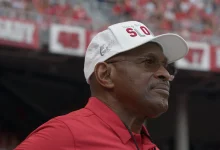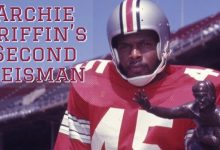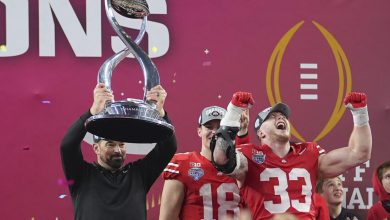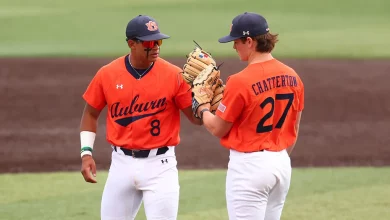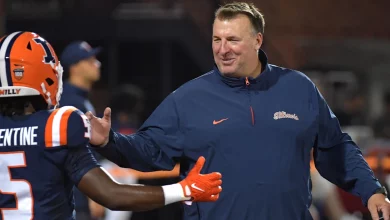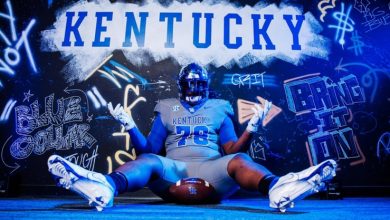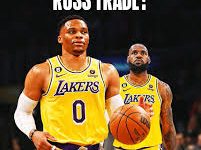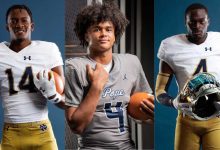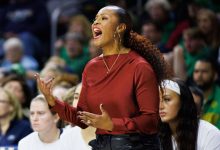Kentucky’s Otega Oweh faced a crucial decision on NBA draft withdrawal deadline due to NIL considerations.
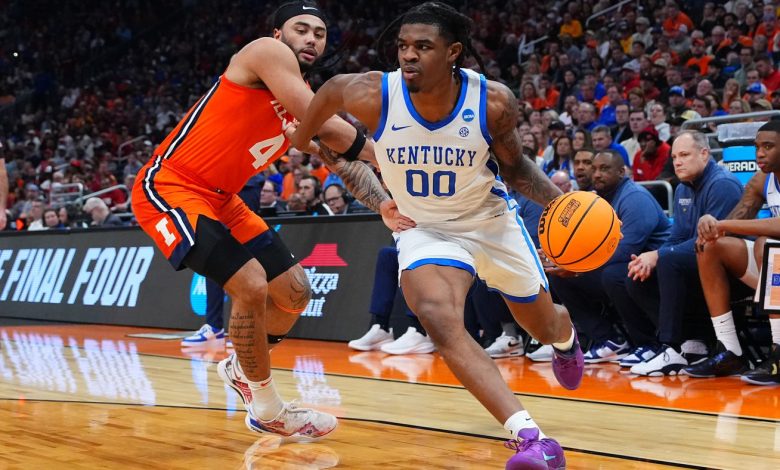
The landscape of college athletics has undergone a seismic shift in recent years, primarily driven by the advent of Name, Image, and Likeness (NIL) rights. Student-athletes now have the opportunity to monetize their personal brands, which adds a new layer of complexity to decisions about professional prospects, especially for high-profile athletes contemplating the NBA draft. One such athlete is Kentucky Wildcats forward Otega Oweh, who faced a pivotal choice regarding his NBA draft status amid NIL considerations.
Background: Otega Oweh’s Rise at Kentucky
Otega Oweh, a talented forward from Nigeria, showcased significant promise during his time at Kentucky. Known for his versatility, athleticism, and defensive prowess, Oweh became a key contributor to the Wildcats’ success. His performances on the court made him a potential NBA prospect, and he was widely projected to evaluate his draft stock during the annual NBA Draft process.
In college sports, players often declare for the NBA Draft to receive feedback from scouts, agents, and team executives about their potential draft position. This process helps athletes decide whether to stay in college or pursue a professional career. Traditionally, players would declare, receive feedback, and then decide whether to withdraw from the draft and return to college.
The Introduction of NIL and Its Impact
The NIL era, which began in earnest around 2021, fundamentally changed the calculus for college athletes. Under NIL, players can profit from their name, image, and likeness through endorsements, merchandise sales, personal appearances, social media promotions, and other ventures. This development has created new revenue streams for athletes, sometimes rivaling or surpassing their potential NBA earnings, especially for those who might not be projected as first-round picks.
For Otega Oweh, NIL presented a significant opportunity. Unlike previous generations, he could monetize his brand while still in college, which could influence his overall decision regarding whether to turn professional or remain in school longer. The financial considerations, combined with his draft evaluation, created a complex decision-making environment.
The NBA Draft Process and the Withdrawal Deadline
The NBA allows underclassmen and college players to declare for the draft and participate in the NBA Draft Combine to receive feedback on their prospects. Importantly, players must decide whether to withdraw from the draft by a specific deadline, typically in late May, to retain their college eligibility if they choose to return.
For Otega Oweh, this deadline was a critical juncture. Declaring for the draft without securing a high enough projection might mean losing college eligibility if he chooses to return. Conversely, withdrawing early could allow him to continue exploring his options, improve his draft stock, or capitalize on NIL opportunities.
Factors Influencing Oweh’s Decision
Multiple factors influenced Otega Oweh’s choice:
1. **Draft Stock and Feedback:**
Oweh’s evaluation from NBA scouts was crucial. If feedback indicated he was a late-second-round pick or undrafted, he might consider returning to Kentucky to develop further.
2. **NIL Opportunities:**
The potential to earn significant income via NIL endorsements, social media, and personal branding posed a compelling incentive to stay in college longer. For athletes like Oweh, who may not be projected as first-round picks, NIL earnings could be substantial.
3. **Player Development and College Experience:**
Remaining at Kentucky could allow Oweh to further hone his skills, increase his draft value, and gain more exposure. The college environment offers coaching, competition, and a platform for personal growth.
4. **Financial Considerations:**
The decision to stay or go also involved weighing immediate earnings from NIL versus the potential long-term benefits of an NBA career. Some athletes might prefer to maximize NIL income in the short term while still having the option to pursue the NBA later.
5. **Family and Personal Goals:**
Athletes often consider family, education, and personal aspirations. Oweh’s decision would also reflect his long-term goals and the advice of mentors and advisors.
The Decision-Making Process
Otega Oweh’s decision-making process was likely multi-faceted, involving consultations with his agent, college coaches, family, and NIL marketing teams. He would have analyzed:
– The projected draft position based on recent evaluations and mock drafts.
– The monetary benefits from NIL opportunities if he returned to Kentucky.
– The risks associated with entering the draft and potentially not being selected.
– The benefits of returning to college for another year of development and exposure.
This process exemplifies the new paradigm in recruiting and athlete decision-making, where NIL opportunities are factored into athletic careers, sometimes even outweighing professional prospects.
The Final Decision: To Stay or To Go?
While the specifics of Oweh’s decision at the draft withdrawal deadline are not publicly detailed in this context, such decisions typically fall into two categories:
1. **Declare for the Draft and Stay In:**
This involves submitting the necessary paperwork, participating in the Combine, and then withdrawing if the feedback suggests a better chance to develop or capitalize on NIL. This path allows athletes to keep their college eligibility intact.
2. **Withdraw and Return to College:**
If the athlete believes they can improve their draft stock or if NIL opportunities are lucrative enough to justify staying, they may withdraw before the deadline and return to college for another season.
Given the complexities, many athletes opt for a strategic approach—declaring initially to gather feedback, then withdrawing if the prospects aren’t favorable or if NIL opportunities are substantial.
—
### Broader Implications
Otega Oweh’s scenario reflects broader trends in college athletics:
– **Increased Complexity in Decision-Making:**
Athletes now weigh NIL potential alongside professional prospects, making decisions more nuanced than ever before.
– **NIL as a Game-Changer:**
The ability to monetize personal brands has shifted the traditional trajectory, allowing athletes to earn during college and potentially influence their decisions to stay or go.
– **Recruiting and Player Development:**
College programs are adjusting to this new environment, emphasizing player development, branding, and NIL management as part of athlete support services.
– **Legal and Ethical Considerations:**
The NIL landscape also raises questions about fairness, compliance, and the influence of external income on college sports integrity.
—
### Conclusion
Otega Oweh’s decision regarding the NBA draft withdrawal deadline, set against the backdrop of NIL considerations, encapsulates a new era in college athletics. Athletes now navigate a complex web of professional prospects, personal branding, and financial opportunities. While the specifics of Oweh’s choice are private, his situation exemplifies how NIL has become a pivotal factor influencing athletic career decisions.
In the end, Oweh’s choice underscores the importance of strategic planning, informed advice, and understanding personal goals within this evolving landscape. As NIL continues to shape the future of college sports, athletes like Oweh serve as trailblazers, balancing their aspirations on and off the court with newfound opportunities and challenges.

